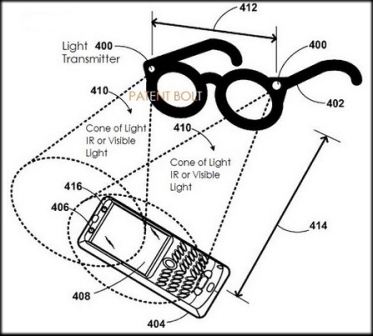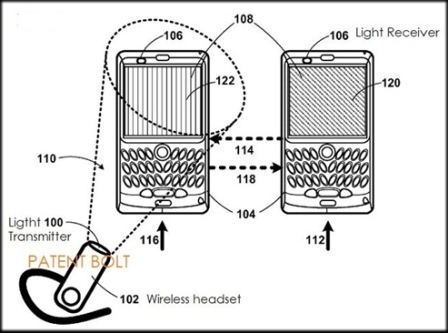The simple answer to the question posed by our headline is no. At the 20,000 foot wearable tech level BlackBerry (News  - Alert) will not even register as a viable smartphone vendor, let alone a wearable tech powerhouse. If we drop down to 10,000 feet it becomes a bit clearer that with just fewer than 80 million users BlackBerry still has opportunities to survive as a smartphone vendor, but we still cannot see any wearable tech market for it.
- Alert) will not even register as a viable smartphone vendor, let alone a wearable tech powerhouse. If we drop down to 10,000 feet it becomes a bit clearer that with just fewer than 80 million users BlackBerry still has opportunities to survive as a smartphone vendor, but we still cannot see any wearable tech market for it.
But what if we drill down a bit more, say specifically to the enterprise share of its subscriber base - which in fact remains huge relative to BlackBerry's current and future revenue streams? There is something that all of those mobile enterprise users have in common - the need for device, app and data security. BlackBerry spends a good deal of time focusing on security for its smartphones and looks to its capabilities here as a differentiator.
Hmm…given that, is there a possibility that perhaps BlackBerry can leverage security as a wearable technology product angle? That is actually not a bad idea! And in fact, it appears that BlackBerry has figured this out. Patent Bolt, a website that focuses primarily on high tech patents (and is associated with the Patently Apple (News  - Alert) website), has just uncovered a patent application by BlackBerry that makes use of an infrared emitter that produces an invisible light stream that communicates with a smartphone or tablet and signals the mobile device to either display the contents of the device on its screen or to scramble or otherwise hide the content.
- Alert) website), has just uncovered a patent application by BlackBerry that makes use of an infrared emitter that produces an invisible light stream that communicates with a smartphone or tablet and signals the mobile device to either display the contents of the device on its screen or to scramble or otherwise hide the content.
As part of the patent application, BlackBerry provided the following image (courtesy of Patent Bolt), which we can use to focus the discussion:

For the sharp-eyed among us, it is notable that the image provided in the application, as shown above, is probably older than one might think - those drawings of BlackBerry devices look suspiciously dated to us. And you would be right. BlackBerry filed their patent application under serial number 271281 back in Q4 2011 so clearly the idea has been around BlackBerry's halls for some time.
That issue aside, what we can see here is that BlackBerry has devised, is in the process of devising, or is thinking of devising, a paired system - the BlackBerry device itself and a wearable IR emitter, which interact with each other to control the device's screen and possibly other functions as well. The BlackBerry mobile device would need a way to detect the IR beam - or the "spread" of IR light, as the diagram shows it. Keep in mind that the IR light is not visible to human eyes, so there would be no direct clue that such a beam of light is being projected.
In the example shown above, the wearable component is a pair of glasses. In the image shown below, the wearable component looks to be a Bluetooth earpiece serving a dual function.

But in truth the IR emitter can be anything a user ends up wearing. Perhaps it’s a "decoder" ring, or a lapel button. We're tempted to add "tie clip" to the mix, but that would probably be rather suspicious in this day and age.
One thing we are not sure of is how the emitted light can be customized for specific users. One thought would be to be able to adjust the light's intensity, which could in theory result in an infinite range of intensities, even within a specific start and end point of intensity ranges that could be randomly set for a given period of time between pairings. A specific light intensity pairing could be required in order to activate a password login, for example.
Beyond that, the beam of light could be used to signal the mobile device to scramble or unscramble its display, so that only the person who paired the specific light intensity to a given device within a certain range of time can actually access the display itself. Perhaps the device can have user-adjustable (or corporate-adjustable) settings that give the user a certain amount of access time to the display (so that a user can turn his or her head and not immediately cause the display to become constantly scrambled and unscrambled - which could be jarring to the user).
That's one possible use. Perhaps an enterprise may only authorize the display to activate certain functions, such as a wireless network login, or the ability to view business contact information. Or perhaps a device is generally usable but only allows certain types of content (perhaps confidential files, e-mails or e-mails sent from specific people) to only be seen when the paired emitter's light is present. There are obviously myriad possibilities and combinations. In extreme cases, one could conceivably have a three-factor authentication process (light emitter + biometric component + login/password). In certain realms of security this is not overkill.
The flip side of the pairing is the "un-pairing" of the two components. Under very high security scenarios the un-pairing or decoupling could conceivably completely deactivate the mobile device and render it unusable. Under less stringent security scenarios perhaps all business contacts disappear but personal contacts remain visible.
Of course 2011 was about two years ago, and since then we've had numerous improvements in wearable tech capabilities. We're not completely sure that a light emitter approach is all that viable. Still, it is interesting to note that BlackBerry was thinking about wearable options that long ago. Additional ways to enhance security in high risk environments is always a potential selling point.
In any case, we won't hold our breath that Blackberry might deliver on this any time in the near future.
Edited by Alisen Downey
Wearable Tech World Home
 Internet Telephony Magazine
Click here to read latest issue
Internet Telephony Magazine
Click here to read latest issue CUSTOMER
CUSTOMER  Cloud Computing Magazine
Click here to read latest issue
Cloud Computing Magazine
Click here to read latest issue IoT EVOLUTION MAGAZINE
IoT EVOLUTION MAGAZINE




